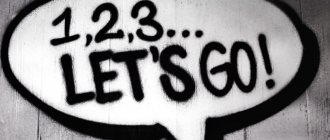Zoophobia - fear of animals - is one of the largest groups of phobic disorders. Naturally, fears of representatives of the animal world are easily explained. Our ancestors were quite rightly afraid of encountering predators, because this could threaten their lives. This reaction is fixed on a subconscious level, and our contemporaries, who live in cities and do not risk encountering a dangerous animal, can experience real horror and bouts of irrational fear at the mere thought of “our little brothers.”
Types of zoophobia and their names
The most common disorder is ailurophobia or fear of cats . Typically, this phobia occurs when contact with a cat is unsuccessful and develops as a result of physical or emotional trauma. Cat phobia is a “classic variant” of the disorder, since cats are considered domestic animals and are found in almost every home.
Ailurophobia is a mental disorder that most often occurs in childhood if the child has negative experiences with the Feline family.
Fear of reptiles or herpetophobia is also quite common . For inexplicable reasons, a person begins to fear or feel anxious about lizards, snakes and other reptiles. Usually the object of fear is individual - panic is caused by a specific type of animal, for example, a person is afraid of frogs.
Note: Herpetophobia leads to a person refusing to visit any place where he might encounter a reptile. This could be a zoo, a recreation park, or corners of nature. Refusal to communicate with the rich natural world occurs against the background of a phobia.
Some individuals become increasingly panicky at the sight of horses . This is hippophobia. However, horses in our time are quite a rare phenomenon, and the very nature of the animal is peaceful. The animal is capable of biting or kicking if handled roughly.
Hippotophobia was common in the old days, when there was a horse in every household. If the sight of an animal in a picture or a program broadcasting a race causes panic, this is a serious reason to contact a specialist.
This is interesting . Napoleon was afraid of white horses: there were no white horses in his stable. In a famous painting, the artist depicted the great commander riding a white horse, but this is more a figment of his imagination than a sketch from life.
What is the fear of wild animals called? This is agrisophobia. People who have only seen animals on TV are afraid of wild nature, and trips outside the city are considered nightmares . Usually this phobia occurs secretly: residents of megacities feel quite comfortable in a familiar, human environment. Agrizophobes do not keep pets because they are wary of them and expect aggression on their part.
We recommend that you read: What is the fear of snakes called - causes and treatment of phobia
Fear of cows and bulls are different phobic disorders . The first is called waccaphobia, the second is the most common and refers to taurophobia. Taurophobia is used broadly as the fear of cattle. This phobia occurs in rural areas. When an animal behaves aggressively and a person flees, this is an instinct of self-preservation. If the sight of a bull in real life, in a picture or in a movie causes panic and horror, you are dealing with a taurophobe.
This is interesting. There is a well-known story when a certain Paris Hilton met a charming and pleasant young man through a dating site. A correspondence began, and the girl invited the guest to her ranch. The story had a sad ending, since the lover was afraid of animals and suffered from taurophobia.
Fear of ducks sounds funny, but science also knows the fear of birds. The most common fear is of birds from the order Carnivora, whose life is surrounded by myths and legends (ornithophobia). It is easy for a city dweller to avoid communication with mammals, but birds have adapted to life in the “jungle of civilization.” For example, in an ornithophobe, the fear of pigeons is fully manifested.
Most often, fear of birds is an acquired phenomenon and manifests itself in both adults and children . One of the reasons is a disruption of the vestibular apparatus, when any movement of the bird causes nausea, dizziness or restlessness.
There are examples when people experience panic in front of fish (ichthyophobia) or they develop a fear of sharks (selachophobia). There may be an unreasonable fear of becoming infected with parasites (helminthophobia). There is a well-known horror of microorganisms - the culprits of many diseases and inflammatory processes (microphobia).
There is a phobia when a person is terrified of getting scratches or bites when interacting with animals , so he tries to stay as far away from them as possible (emichophobia).
"Morke Genocide"
In June 2021, the first case of mink infection was reported in Denmark. The infection spread quickly. Epizootologist Svetlana Shchepetkina says: “They began to get sick in the Netherlands, Italy, Spain, the USA, and Denmark, where clear transmission of the pathogen from humans to minks was recorded.” And then what everyone was afraid of happened, says Danish infectious disease specialist Andres Fromsgaard: “They initially became infected from us. But the virus mutated in their bodies, spread among the population and, in this altered form, was transmitted back to humans.”
As a result, more than a dozen Danes tested positive for COVID-19, including even children. The lack of research that would help to understand what the mutation would lead to pushed a person to cruelty. The Danish government has decided to completely destroy the entire population of the furry animal in the country. Both sick and healthy. For their efficiency, farmers were offered financial compensation. The condition is that all animals will be killed within a week. When 2.5 million individuals were slaughtered, the authorities finally came to their senses and stopped. The mink genocide even led to the resignation of the head of the Danish Ministry of Agriculture.
The rarest types of fear of animals
Among fears there is a special type - exotic, which are rare , but torment individuals no less than others. These phobias have no less exotic names. For example, alektorophobia is the fear of something or someone from birds. Known:
- doraphobia (fear of the fur and skin of animals);
- ostraconophobia (fear of shellfish);
- alektorophobia (panic at the sight of a chicken);
- mottephobia (horror of the sight of butterflies);
- Scoleciphobia (fear of worms).
On a note. There are quite a few people who experience fear only at the sight of animals, but these phobic disorders are not always detected. Sometimes a person avoids the object of his fear or strives to get rid of the problem on his own, without consulting a doctor. Most often, zoophobia is formed in preschool age, so it is classified as a childhood phobia.
Past
Main article
The most obvious reason for fear of an animal is that the animal once scared you, for example, a dog barked at a child and he got scared. That's all, fear out of nowhere. And our most obvious way to solve such problems is the PARKOUR technique from the practical course.
But here's a less obvious question: many people have been barked at by dogs and many have been scared, but why did some grow up with a normal attitude and some with fear? Why, for example, might some people at the zoo be afraid of everything from rabbits to turtles? And we also covered this topic in detail in the blog, so you can go and look and weaken these implicit reasons. And this will allow you to bear your fear much easier, and our practice today will be much easier for you.
Which we'll move on to.
For what reasons does zoophobia develop?
Zoophobia is not a pleasant disease, but it is curable. Knowing the origins or roots of a psychological disorder, you can gradually achieve recovery . The problem does not disappear from the subconscious, but it is successfully stopped. Zoophobia is a general concept, and a person usually experiences fear of a specific animal and its causes can be:
- a primitive, ancient instinct or feeling of fear at the genetic level;
- psychological trauma originating from childhood;
- the example of parents, when fear is “inherited” to the child;
- an initially incorrectly formed idea of the animal world.
We recommend reading: How to overcome the fear of losing a loved one
The behavior of a zoophobe is predictable. He takes into account his condition at the subconscious level and avoids a place on the staircase where a cat might sneak through. Doesn't go to visit neighbors who have hamsters or a parrot. Avoids places where pets are walked.
On a note. The delineation of the boundaries between normality and pathology in the case of zoophobia is not clear: fear of animals is characteristic of most bipeds. A healthy person will gradually forget an unpleasant encounter with a specific representative of the fauna, but a zoophobe will replay the unpleasant moment for a long time until the subconscious registers it.
Reactions
Main article
Firstly, you can work with your first reaction to the very image of the animal, to its appearance in front of you. And secondly, with reactions to all possible spontaneous and aggressive behavior, which most often frightens.
And also note your first reaction when you realize that you will have to work with your fear, deliberately meeting a frightening animal. And note your attitude towards this work, how do you feel when you realize that you will have to subject yourself to these procedures? And work it out too.
How does zoophobia manifest itself?
When an object of fear suddenly appears in the path of a person suffering from zoophobia, he exhibits signs of illness at the physiological level . Sudden panic and horror lead to the release of “fear hormones” - adrenaline and cortisol. They call:
- dilated pupils;
- increased heart rate;
- dry mouth;
- muscle tension;
- pale skin;
- facial expressions reflecting fear.
These are somatic manifestations of the body in response to a threat or reaction to danger . At the same time, thoughts about a specific threat arise, the emotional background changes, and the person flees or hides from the object of panic. Most of these signs are fully manifested, some – partially. It all depends on the emotional background of the person and the strength of the negative emotion experienced.
Mild form of phobia
If the animal sneaks past, the threat quickly passes, then the individual suffers less and the phobia manifests itself in a mild form. Sometimes horror is caused by the sight of a picture depicting an animal that a zoophobe is so afraid of . He experiences:
- disgust;
- disgust;
- aggression.
In this case, increased breathing rate, tachycardia and dilated pupils are observed . There are no other psychosomatic manifestations: the person controls his body.
Severe form of phobia
The zoophobe is afraid of his specific “enemy” all his life, and this poisons his existence, causing him to suffer. During an exacerbation of the disease, when an animal that causes negative emotions is often close, the person experiences an acute phobic disorder :
- fear of approaching death;
- nausea and dizziness;
- excessive sweating;
- increased breathing and shortness of breath;
- inappropriate behavior.
We recommend reading: How not to be afraid of a fight and be brave
Many famous people suffered from manifestations of zoophobia . And the quality of life changes for any person. For example, he completely deprives himself of communication with nature. He must be constantly on guard so that the “enemy” does not suddenly appear nearby. A poorly controlled condition does not lead to stability.
Signs
Main article
As always, first select which animal you are afraid of. This will be the Object of your fear. And secondly, note the Situations that may happen when you “communicate” with this object, and which you are also afraid of. For example, many are afraid not of the animal itself, but of the fact that it will bite or jump on a person.
- Let's start with the reactions. How do you react to this object and these situations? What's your first reaction?
- What state are you in at this moment?
- What thoughts and imaginary fears come to you? What do you think about this animal of yours and the situations associated with it?
- behavior does this trigger in you ? What do you do, as usual, try to avoid contact with him?
- And what is your general image of yourself ? That is, who and how do you feel when you are afraid?
Is it possible to get rid of the fear of animals on your own?
If the phobia manifests itself moderately, then a few simple tips will help alleviate the condition.:
- Change your diet to a balanced and reasonable one.
- Control the ratio: work - rest to avoid nervous overload and aggravation of the situation.
- Play sports to dull the feeling of fear from fatigue.
- Do not deny yourself your favorite activities for a good mood and positivity.
- Communicate with yourself by conducting accessible training exercises to relieve anxiety and stress.
These actions are not getting rid of zoophobia, but removing the main symptoms of its manifestation and strengthening the psyche . To completely stop being afraid, you need the help of a competent psychotherapist.
Beliefs
Main article
Find out why you are afraid of your unfortunate little animal, whether your ideas about it are adequate. And replace your beliefs with more adequate ones. So that your scary automatic thoughts do not interfere with you and do not trigger fear.
And you can also note what cultural beliefs and superstitions there are about your animal, and how much you personally believe in them.
And what do you think about working with today's technicians? Will you be able to remove fear, will you not give up, and how will this happen? As always, note and correct any negative, limiting thoughts that may interfere with our work.
Treatment methods
The approach to zoophobia uses medication and psychotherapy . Usually their combination is effective and brings specific benefits to the sick person.
The course of treatment is long and complex, since the roots of the problem lie in the subconscious. But it is quite possible to alleviate the patient’s condition.
Medication
Pills for fear have not yet been invented, but medical therapy for phobias exists. It partially relieves the symptoms of anxiety associated with zoophobia, normalizing the mental state . Patients are prescribed tranquilizers and (or) sedatives. A course of treatment is prescribed for up to 2 weeks, after which work with the conscious and subconscious begins.
Psychotherapy
Psychologists work with the patient, trying to bring the object of fear closer to him. This process occurs in several stages :
- During the conversations, they find the cause of the phobia and teach them to accept their fear by “looking into its eyes.”
- An encounter with a traumatic animal begins with its image, toy or figurine. The patient is then shown an animal in a cage to get used to the isolated “enemy.”
- They offer to touch or stroke the animal, pick it up or try to communicate, and walk it on a leash, if possible.
This is a long process that takes several months, but the result is usually positive . The patient and his reaction to what is happening must be constantly monitored by a psychologist. And then gradually the fear that a duck is “watching” you goes away.
Some former zoophobes subsequently own a pet that was previously a traumatic object.
Target
Main article
Let's not be original with goals. Make up alternative signs:
- How do you want to react to the animal's first appearance?
- The most important thing is to note what kind of mastering, adequate behavior do you need with this animal?
- What states and emotions will be desired during this behavior?
- How do you want to think about this animal? What thoughts will accompany the behavior?
- And what unified images of yourself will turn on at this moment?
If it's difficult to determine what you want, you can use a model. And not only a person who is not afraid. And a model of another animal to which you are normal.
For example, if you are afraid of cats, but love hamsters, then just write down all these manifestations, how you react, feel, act, think about hamsters. And think about it: would it be nice to treat cats the same way?
And after that our traditional question: Why do you need this? When you improve your relationship with an animal, will your life really be easier and more fun?
And most importantly stay safe so that in your new relationship you will be as reliably protected as in fear. That is, you probably shouldn’t set a goal to be moved and hug every stray dog you see. You probably shouldn’t stick your hands into a wasp’s nest either.
next task is to prepare for behavioral therapy techniques. So that you calm your fears in advance. So that by the time you meet the object, the animal, you practically don’t have to do anything except approach and communicate normally. There are no special features here, just use the techniques from the relevant classes and practical newsletter.
This is the first thing. And secondly, you can track and work through your negative manifestations not only towards the animal, but also towards the therapy itself, towards the fact that you will have to interact with this abomination and experience fear.











